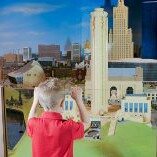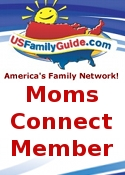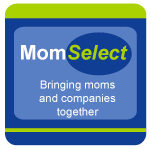Make no mistake about it: since the release of the original iPhone and the rise in prominence of smart devices of all types, we are now living in an “app centric” world. In decades long past, a piece of software needed to do as much as possible to stand out in a crowded marketplace. A word processor wasn’t just a word processor – it also designed multimedia presentations, built fliers, would allow you to print labels and more. It may not have done all of those things extremely well, but the mere fact that it could do them at all helped a number of companies get a foothold in the marketplace.
An app-centric world essentially takes that business model and flips it 180 degrees. Instead of doing as much as possible, apps are now small pieces of software that do one thing incredibly well. This type of environment allows software developers to embrace true innovation and take us places that many might have never thought possible just a few years ago. One of the best examples of this is the way that developers are consistently breaking new ground with regards to the types of apps that are aimed at kids.
More specifically, these types of children’s apps are regularly being designed with a specific portion of a child’s day in mind. All of the popular children’s apps that you hear about aren’t necessarily designed to replace tools that they’re using in the classroom, for example. Nor are they attempting to completely supplant the types of resources that they’re using to continue that education at home. Instead, they’re adding a variety of revolutionary features in an attempt to successfully bridge the gap between the classroom and the home environment.
Software developers are seeing a particular level of success with regards to special education students. Kids in this category are traditionally drawn into the software initially thanks to all that the hardware has to offer. A tablet device like the iPad is large enough to be completely immersive but small enough to be inherently portable. It has a touch screen interface, which adds to the level of interactivity that children can experience. The apps themselves, however, are what are really attracting the attention of kids and are getting them to fully embrace this new digital age.
Apps can be true multi sensory experiences for not just special education kids, but for kids in general. They can touch the screen and interact with the app using the touch screen interface present on many of these types of devices. They are also engaging sight and sound by way of video, audio lessons and other types of digital elements. Suddenly tasks that kids would normally have no interest in like learning particular lessons, maintaining their busy schedules, communicating with instructors and more is now “fun,” which is perhaps the most important benefit of all.
Asking a child to read ten pages on a particular history topic is enough to put any type of young person right to sleep. If the same information can be conveyed in an interactive way through a touch screen app complete with music, video and additional elements, suddenly you have a real chance at getting kids excited about learning in a way that wasn’t possible just a few short years ago.
This is really the area where software developers are breaking new ground with children’s applications for these types of devices. They aren’t just creating a whole new software experience aimed at kids – they’re essentially throwing out teaching practices of decades past and have created a fun, exciting and engaging new environment where kids are truly enjoying learning for the first time in quite awhile.
———-
Bonnie Woodrum’s background is eclectic to say the least. In the 80’s, she spent 10 years driving a semi-truck traveling the highways across the U.S., Canada and Mexico, at a time where that type of work was (and still is) dominated by men. During the 90’s, Bonnie moved into a business altogether different and spent a decade as an accredited daycare owner and operator. Today, Bonnie (or LeahSay as she’s also known as), is a full time writer and owns her own blog, LeahSaysViews.com. LeahSaysViews has been active daily for the last five years and is focused on family-friendly topics that include reviews for products and services.
Bonnie blogs for a number of children’s entertainment and mom-targeted/kid-centric brands such as Purex, Safety 1st, National Geographic, PBSKids, American Greetings Properties, owners of Care Bears & Strawberry Shortcake, Outfit7 Limited, producers of Talking Tom and Friends and Talking Angela, and Bandai America, one of the largest public toy companies in the world and makers of Power Rangers action figures, Tamagotchi and more.
Bonnie attended Crowder College with studies in transport technology and agriculture. Mother to five, and grandmother to ten, Bonnie enjoys gardening, cooking, reading, traveling and spending time with her family. Bonnie lives the American dream in Joplin, MO in a farm complete with barns, livestock and hay.
Thank You for Sharing!
Enter our latest Giveaway(s) & sign up for our daily . You wouldn't want to miss our next big review or giveaway!
*Note facts and pictures may/may not be taken from the above mentioned site(s) or supplied by myself. Affiliate links my be included in this post.*












































